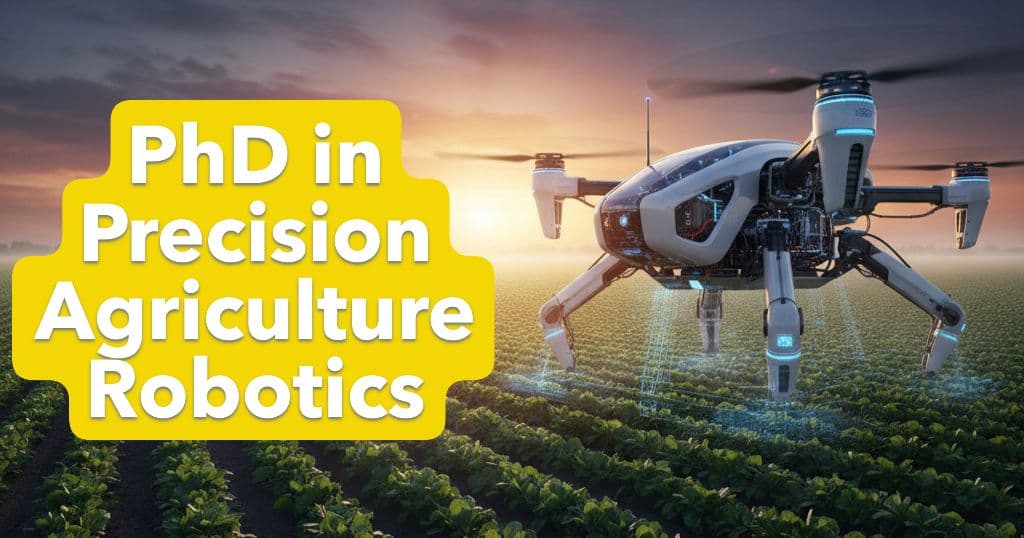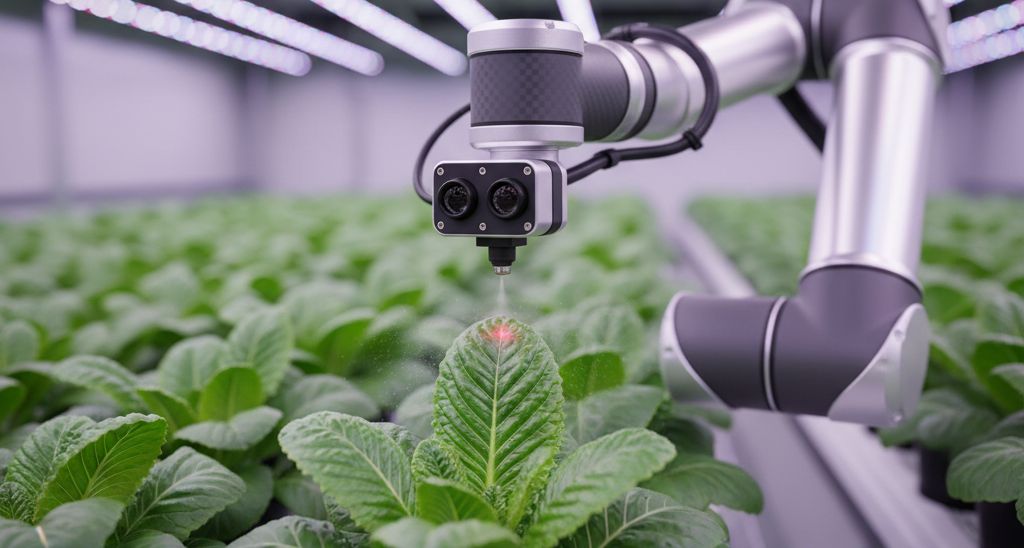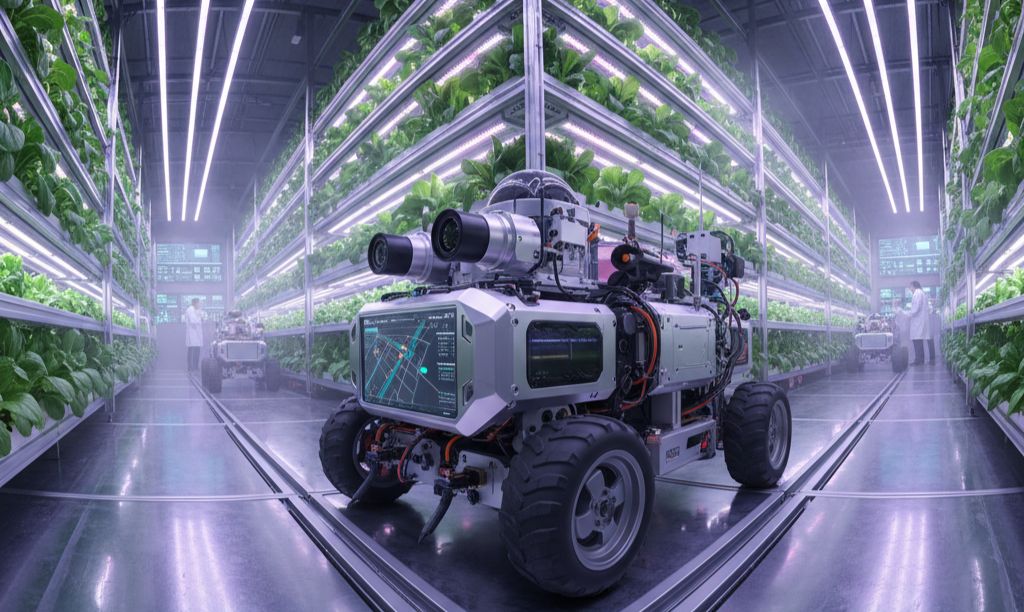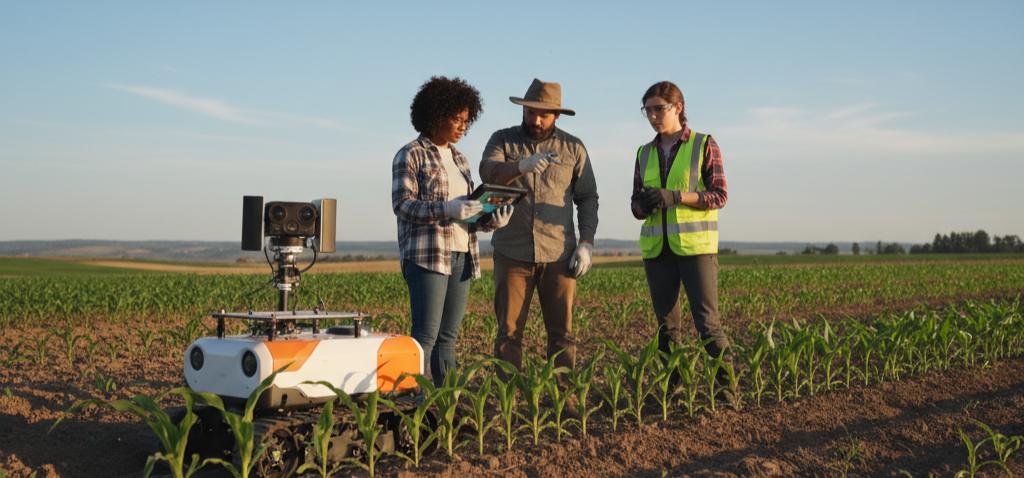What is PhD Research in Precision Agriculture Robotics

PhD Study and Research Interest
A PhD, short for Doctor of Philosophy, is the highest academic degree awarded by recognized and accredited universities. It represents the peak of scholarly expertise, earned through original research, critical analysis, and the production of a dissertation that adds new knowledge to a discipline. An essential component of any PhD journey is selecting a research interest that targets a real problem, offers innovation, and aligns with the expertise of potential supervisors.
Fields such as robotics, precision agriculture, and knowledge-based analysis are expanding rapidly, attracting both professors and prospective PhD candidates. If you are still weighing your doctoral path, you can start with our overview, What is a PhD? A Guide for Prospective Researchers, before diving deeper into this specialization. On October 10, 2025, a search for "precision agriculture" on StreamlinedAI.app returned 35 professors in under five seconds, giving applicants a fast path to initiate conversations with relevant research teams. The sections below explain why robotics, precision agriculture, and knowledge-based analysis are high-value areas for doctoral research.
PhD Research in Precision Agriculture Robotics: The Future of Smart Farming
The world’s food production systems face unprecedented pressure. United Nations population projections suggest that 9.8 billion people will need reliable, sustainable food sources by 2050. Precision agriculture robotics sits at the heart of this transformation because it merges robotics with artificial intelligence to address the surge in food demand. The field offers an intellectually demanding and fulfilling path that unites engineering, computer science, and environmental stewardship into a transformative scientific discipline.
What Is Precision Agriculture Robotics?

Precision agriculture uses advanced technology with high precision to track and direct farming operations. Farmers deploy site-specific treatments for irrigation, fertilization, and pest control that match the exact needs of individual plants and field segments.
Precision agriculture robotics elevates this approach by using autonomous robots, drones, and sensor networks to conduct real-time data collection and assessment. Robotic data acquisition and knowledge-based evaluation provide researchers and farmers with comprehensive insights into soil conditions, plant health, and environmental factors. The result is a data-driven farming system that maximizes productivity while reducing waste and ecological impact.
Why Pursue a PhD in Precision Agriculture Robotics?
A PhD in precision agriculture robotics focuses on delivering sustainable food security and advanced environmental management. Researchers in the field tackle global challenges ranging from labor shortages and climate variability to food preservation and resource allocation. The technological evolution of agriculture has created surging demand for experts who can integrate robotics, data analytics, and agronomic systems.
Doctoral work in this area blends four core domains: robotics engineering with machine learning, remote sensing, agronomy, and environmental science. The combined academic and industrial focus makes room for cross-disciplinary collaboration, producing graduates with deep scientific expertise and commercially valuable skills.
The Role of Robotic Data Collection in Precision Agriculture

Precision agriculture robotics relies on autonomous ground vehicles, aerial drones, and sensor networks that gather environmental and crop data. Traditional data collection methods depend on human operators who conduct time-intensive tasks prone to error. Robotic systems, by contrast, deliver consistent accuracy when collecting high-resolution imagery, soil moisture, and temperature readings.
These robots use Simultaneous Localization and Mapping (SLAM) technology to navigate complex agricultural settings and maintain spatial awareness when GPS signals are weak or unavailable, such as in dense greenhouses. When combined with kinematic control systems and motion planning algorithms, they support sensing and intervention tasks—like precision spraying, pruning, and weeding—with minimal human oversight.
From Data to Knowledge: Knowledge-Based Analysis in Precision Agriculture
Robotic data acquisition becomes truly powerful when converted into actionable insight. Knowledge-based analysis delivers this conversion. PhD researchers apply deep learning, computer vision, and advanced data processing to detect crop irregularities, diagnose plant diseases, and forecast yields with high accuracy. For example, convolutional neural networks can distinguish between healthy plants and those showing pest or nutrient stress in robot-captured imagery.
By embedding agricultural domain models and prior knowledge into intelligent systems, researchers can generate informed recommendations that guide timely interventions. The fusion of robotic sensing and knowledge-based analytics establishes a new standard for evidence-led farming decisions—attractive ground for ambitious doctoral candidates.
Technological Foundations of Precision Agriculture Robotics
Executing a PhD project in precision agriculture robotics means orchestrating several advanced technologies into a cohesive system for autonomous, intelligent farming. Key technical pillars include:
- Simultaneous Localization and Mapping (SLAM): Enables robots to map dynamic agricultural environments while maintaining spatial awareness.
- Kinematic Control and Motion Planning: Provides the precision and flexibility needed to execute sensing and intervention tasks.
- Real-Time Machine Vision: Powers weed detection, pest monitoring, and early disease diagnosis.
- Deep Learning Networks: Analyze vast agricultural datasets to forecast yields, track disease progression, and optimize resource use.
- Robust Telemetry and Connectivity: Maintain reliable data exchange between robots, sensors, and command centers across large farm areas.
Together, these components create dependable systems that operate at scale and support sustainable farming.
Collaborative Research and Real-World Applications

Precision agriculture robotics thrives on multidisciplinary collaboration. The AgriHub at IIT Indore exemplifies this approach, combining genomics, phenomics, data analytics, and artificial intelligence to reimagine farming. Doctoral students immersed in such ecosystems collaborate with agricultural scientists, robotics engineers, and AI specialists to transition research breakthroughs into tangible field applications.
The outcomes of these partnerships stretch beyond academic publications. They influence farm management practices, support agritech startups, and inform policy decisions focused on sustainable agriculture.
Sustainability and the Global Impact
Robotics-driven precision agriculture extends far beyond automation. By optimizing resource usage—particularly water, fertilizers, and pesticides—it reduces environmental impact while increasing yields. These systems keep farming operations stable in regions facing labor shortages or climate volatility, including developing nations across Asia and Africa.
The work directly supports United Nations Sustainable Development Goals related to zero hunger, clean water, and responsible production. For policymakers and practitioners alike, the field represents a high-leverage path to global food security.
A Rewarding Path for Aspiring Researchers
PhD programs in precision agriculture robotics develop independent researchers who can solve complex, interdisciplinary challenges. Graduates emerge ready to lead in academia, agritech companies, robotics firms, and environmental organizations.
The field’s open-ended nature welcomes students at various graduate levels—MSc by Research, MPhil, MA, and PhD—to design projects spanning AI-driven crop diagnostics, autonomous robot development, and data-centric modeling. The opportunity space is broad, and the societal impact is substantial.
Concluding Remarks
Blending precision agriculture with robotics and knowledge-based intelligence is redefining the future of farming. PhD researchers who pursue this path build sustainable technologies through autonomous data collection, intelligent decision systems, and automated interventions that boost productivity and ecological resilience.
For aspiring scholars, this field offers a chance to advance human knowledge while safeguarding planetary resources for future generations.
Related posts
- From "IDK" in Seminars to AI Mastery: The Acronyms That Will Transform Your Academic Journey
Use SPARK, GUIDE, FOCUS, REFINE, and SCALE to turn AI tools into precise research collaborators and reclaim hours in grad school.
- Secret Time Saver: 7 Proven ChatGPT Task Automations for Master’s & PhD Success
Seven copy-paste ChatGPT Task templates that automate lit sweeps, advisor prep, funding scans, writing sprints, reminders, and more for Master's & PhD students.
- 10 'Secret' ChatGPT Prompting Methods for Post-Grad Students
Transform your academic writing and research with these 10 field-tested ChatGPT prompting techniques designed specifically for master's and PhD applicants.